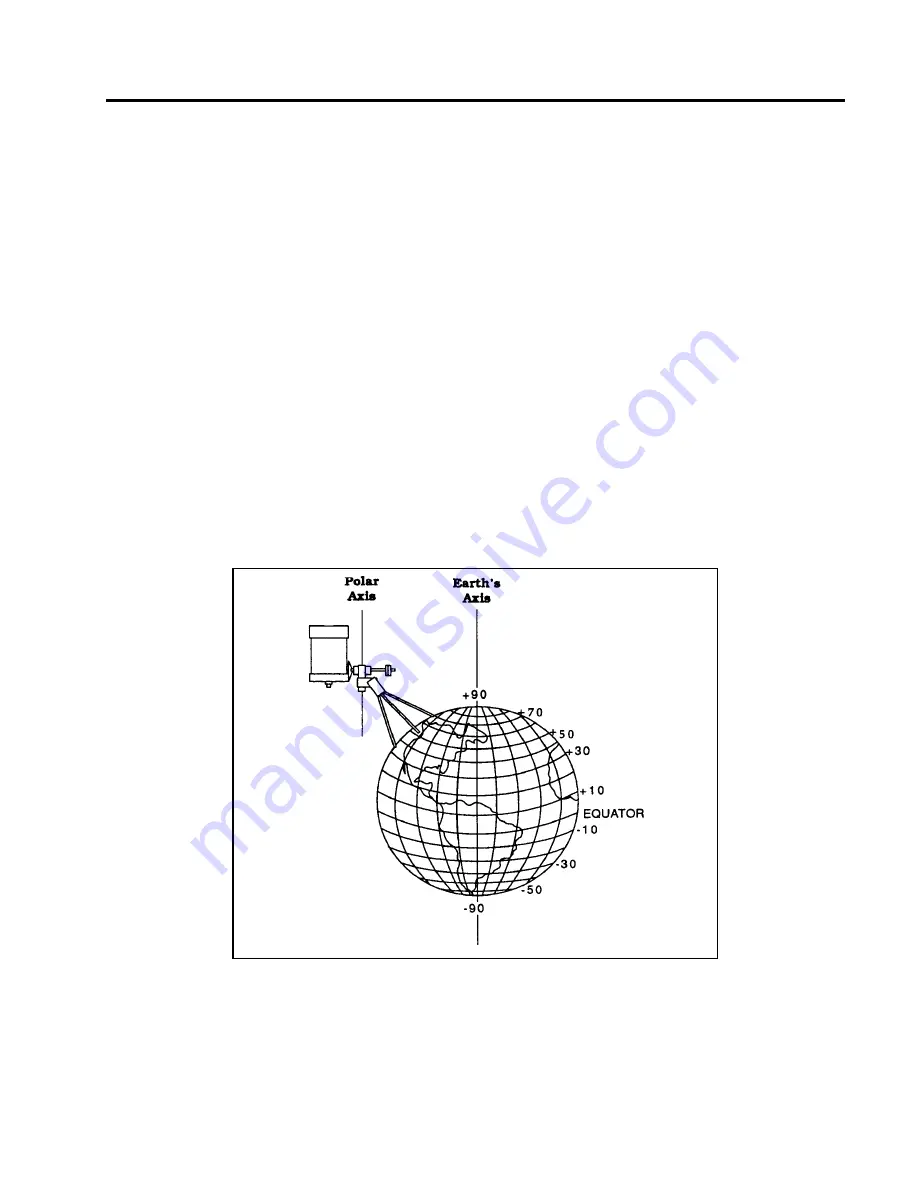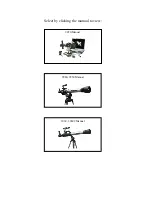
54
Polar Alignment (with Wedge)
In order to do astrophotography, your Ultima 2000 requires an optional equatorial wedge. Ultima 2000’s have built-in
drive motors designed specifically for tracking. Then you need to set the telescope’s axis of rotation so that it tracks in the
right direction. Since the motion of the stars across the sky is caused by the Earth's rotation about its axis, the telescope's
axis must be made parallel to the Earth's.
Polar alignment is the process by which the telescope's axis of rotation (called the polar axis) is aligned (made parallel)
with the Earth's axis of rotation. Once aligned, a telescope with a clock drive will track the stars as they move across the
sky. The result is that objects observed through the telescope appear stationary (i.e., they will not drift out of the field of
view). If you are not using the clock drive, all objects in the sky (day or night) will slowly drift out of the field. This
motion is caused by the Earth's rotation. Since the Ultima 2000 tracks the stars in the Alt-Az configuration, the only time
you will need to polar align the telescope is when you are doing astrophotography or CCD imaging. But, for any sort of
long exposure astrophotography, you must polar align the telescope on a wedge due to field rotation. There are several
methods of polar alignment, all work on a similar principle, but performed somewhat differently. Each method is
considered separately, beginning with the easier methods and working to the more difficult.
Although there are several methods mentioned here, you will never use all of them during one particular observing
session. Instead, you may use only one if it is a casual observing session. Or, you may use two methods; one for rough
alignment followed by a more accurate method.
Definition:
The polar axis is the axis around which the telescope rotates when moved in right ascension. This axis
points the same direction even when the telescope moves in right ascension and declination.
Figure 6-3




































